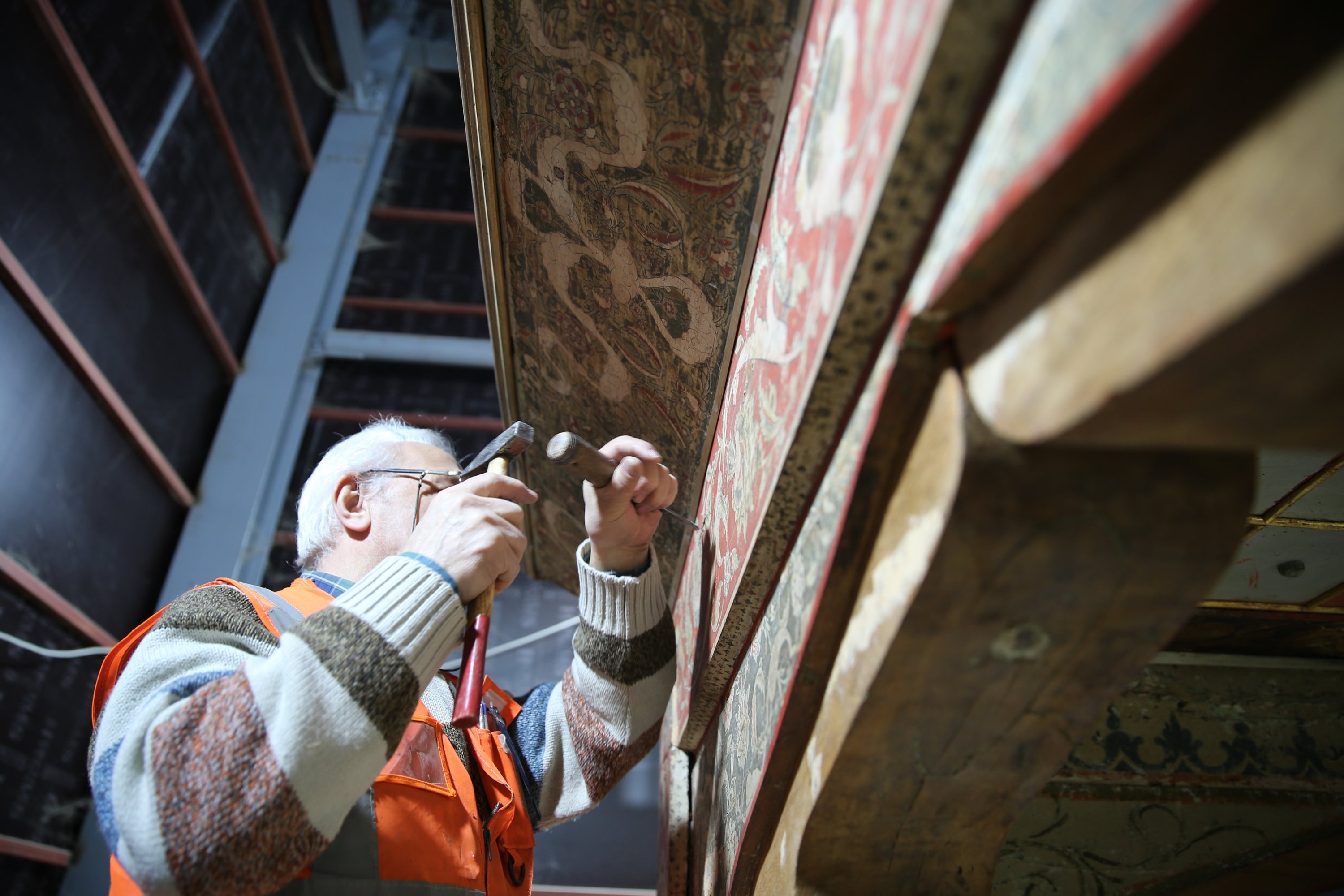© Turkuvaz Haberleşme ve Yayıncılık 2025
Restoration work is ongoing at the muezzin mahfil of Selimiye Mosque, a masterpiece of Turkish-Islamic architecture and home to some of the finest examples of Edirnekari art, a traditional Ottoman decorative art style originating from Edirne in northwestern Türkiye.
A muezzin mahfil is a specially designated platform inside a mosque where the muezzin (the person who calls the call to prayer) stands to recite prayers and lead the congregation in certain religious rituals.
The mosque, designed by the famed Ottoman architect Mimar Sinan and regarded as his “masterpiece,” has been undergoing restoration under the supervision of a scientific committee since November 2021. The project, overseen by the Directorate General of Foundations under the Ministry of Culture and Tourism, aims to preserve the structure for future generations while keeping it open for worship and visits.

Among the most extensive renovations were the mosque’s four minarets, which showed significant wear over time. Restoration teams repaired and cleaned the stonework and replicated the mosque’s only surviving original turquoise tile beneath one of the minaret spires, installing 64 new tiles in its place.
Strengthening and injection work was also completed on the main dome and courtyard domes before lead coverings were restored. The mosque’s two main entrance doors and three courtyard gates were meticulously restored. Its glass and wooden window frames were also replaced.
Interior restoration continues in the porticoed courtyard, where decorative painting and plasterwork repairs have been completed. Work is still in progress on the central muezzin mahfil.
Ahmet Saraç, head of the Edirne Regional Directorate of Foundations, told Anadolu Agency (AA) that the restoration is being carried out with great care.
“The exterior work is now complete, and the scaffolding has been removed,” Saraç said. “We have finished repairing the minarets, finials, lead elements and stone surfaces. The restoration and conservation of the mosque’s wooden doors and shutters have also been completed.”
Saraç emphasized that special efforts were made to remove cement-based plaster from the structure, replacing it with traditional lime-based mortar. Landscaping and courtyard renovations are largely finished, while decorative painting work inside the mosque is progressing rapidly.
Beneath the muezzin mahfil lies an octagonal fountain, topped by a large, ornate wheel design known as a charkifelek, or “wheel of fortune.” Mimar Sinan used this motif to symbolize the Islamic belief that all things originate from and return to God, representing eternity and the cosmic cycle of existence.
Restoration efforts at Selimiye Mosque are expected to continue in phases, ensuring the preservation of this architectural marvel while allowing it to remain accessible to worshippers and visitors.
